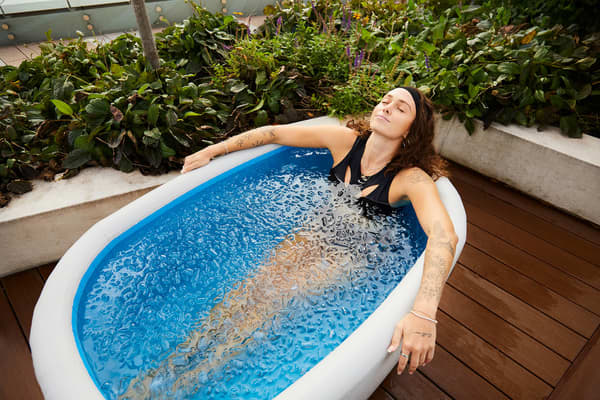What's a Rest Day Workout—And Should You Try It?
Sport & Activity
Experts say active recovery may be even more effective at rebooting muscles than not engaging in any movement at all.

There are days where you just need to take a complete break from exercise. But, another equally effective recovery approach actually involves movement.
Doing a rest day workout may help ease soreness, enabling your muscles to bounce back faster and increasing motivation. Read on to learn more about what all of a rest day workout entails and get tips for trying it yourself.
What Is a Rest Day Workout?

A rest day workout is also known as active recovery because it involves performing low-intensity exercise the day after a high-intensity workout. The goal is to increase the flow of oxygen-rich blood to the muscles and to keep them warm. Both of these factors are key for bringing more nutrients to the areas in need of healing, said Alexander Rothstein, CSCS, programme coordinator for the exercise science programme at the New York Institute of Technology.
Great options for a rest day workout include:
- Walking
- Low-intensity swimming
- Aqua jogging
- Pilates
- Yoga
- Low-intensity cycling
- Light resistance training
Rest day workouts are different from passive recovery. During passive recovery, the body stays at rest (think: lounging on the sofa reading a book or watching TV).
Passive recovery is nice if you're feeling mentally and/or physically burnt out. Engaging in exercises that fall under that active recovery umbrella may not only expedite overall recovery but can help your muscles be prepared for the next workout.
The Benefits of Rest Day Workouts

Many good things can happen when you target specific muscles with low-intensity movement.
First and foremost, gentle movement can boost circulation, helping remove waste and redistribute blood and nutrients to the muscles you taxed during your workout.
In one study, which was published in a 2016 issue of PLoS One, athletes saw a significant decrease in muscle fatigue following a 20-minute active recovery session that targeted the same muscles used in their workout—compared with athletes who didn't target the same muscles. The researchers suggested that light activity helped clear lactate (a by-product of the energy created for exercise) from the muscles and refill the blood with oxygen.
"The end goal is for the circulation to go where you want the healing or recovery to occur", Rothstein said.
Moving blood and nutrients to target muscles also helps reduce the swelling and tenderness that occurs after an intense workout. This can prevent or ease muscle stiffness and soreness, Rothstein said.
Together, these effects can ultimately speed up your recovery, which may help you feel refreshed and ready to take on your next workout.
For example, a study published in a 2010 issue of the International Journal of Sports Medicine revealed that triathletes performed better after a swimming recovery session than after a passive recovery day. The researchers believe that water helps lower inflammation by exerting pressure (known as hydrostatic pressure) on the body.
And, according to a 2019 review in the International Journal of Environmental Research and Public Health, this pressure pushes more blood to major organs like the heart, brain and lungs, where it can collect more inflammation-lowering oxygen and nutrients.
Aside from muscle tissue, joints also benefit from active recovery workouts. "Movement releases more synovial fluid, which lubricates the joints", Rothstein said. The result: less stiffness.
Plus, your rest day workouts can help you meet the recommended 150 minutes of moderate-intensity physical activity per week.
What Should a Rest Day Workout Look Like?

When considering what to do for your rest day workout, look to movements that promote recovery.
If you're a runner, diving into a gentle swimming or cycling session can give your muscles and joints a much-needed break while still challenging your cardiovascular system, Rothstein explained.
"And, again, increase circulation, which is the major focus for an active recovery day", he said.
On the other hand, if you're recovering from a brutal leg day at the gym, you can repeat some of the same movements from your workout to prevent muscle tightness.
"You might do some bodyweight squats to lubricate those joints and warm up those muscles", Rothstein said. Focus on slow, controlled reps using full range of motion.
Regardless of your chosen activity, keeping an eye on your intensity level is essential to avoid adding stress that would further delay recovery.
There are a few ways you can gauge intensity:
- Rate your exertion: an easy approach is to use the rating of perceived exertion, or RPE, scale, which measures how hard you feel like your body is working. The RPE scale runs from zero to 10, where zero is how you feel when sitting in a chair and 10 is how you feel when you're giving your maximum effort. "I would suggest something along a four or five in terms of intensity", Rothstein said.
- Try talking: the "talk test" is another simple way to determine exercise intensity. You should be able to talk comfortably during an active recovery workout, Rothstein said.
- Monitor your heart rate: use your smartwatch or a heart rate monitor to ensure that your heart rate stays within 30 to 60 percent of its maximum. You can estimate your maximum heart rate by subtracting your age from 220. Then, multiply that number by 0.3 and 0.6 to find your heart rate range for rest day workouts. For example, if you're 50 years old, your estimated maximum heart rate is 170 beats per minute and your target heart rate range is 51 to 102 bpm.
A quick rest day workout is more beneficial than doing nothing at all. If 20 minutes is all you can do, then so be it. But, aim for at least 30 to 40 minutes.
"Twenty minutes might be a little short to get your blood pumping", said Cara Carmichael, NASM CPT. If you can go longer, you may see more circulation-boosting benefits.
How Often Should You Include a Rest Day Workout?

Any day you don't have a regular workout planned is a great opportunity for a rest day workout, but it's also imperative that you listen to your body. If you need a complete rest day, take it.
"I don't personally prescribe strict rest days for people", Rothstein said. Swapping an off day with a rest day workout helps you squeeze in more movement overall. Plus, rest day workouts may keep your momentum going, which can help you stay more consistent with exercise.
In fact, a small-scale study, found in a 2019 issue of the journal Obesity, revealed that people who work out at a consistent time every day exercise more often—and for longer periods of time—than those who don't. If you typically get your sweat session done in the morning, getting in a rest day workout around that time on your off day may help you stick to this daily ritual.
Words by Lauren Bedosky





